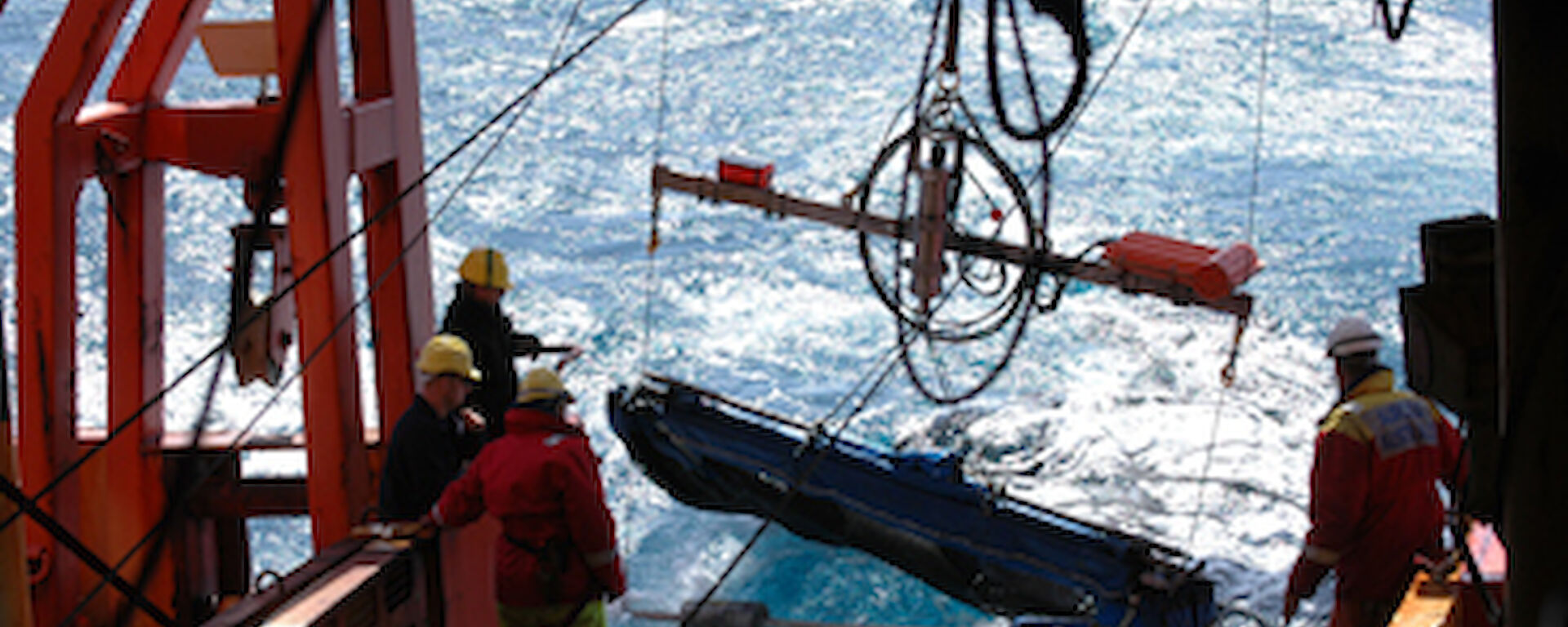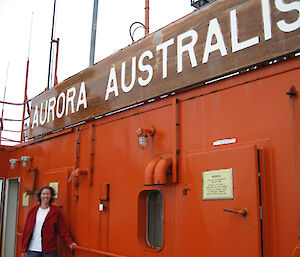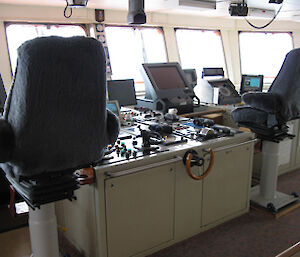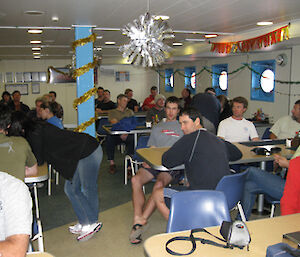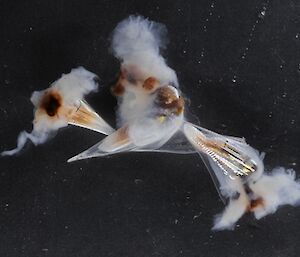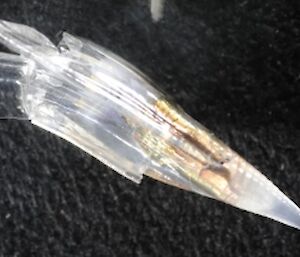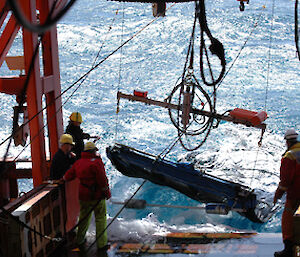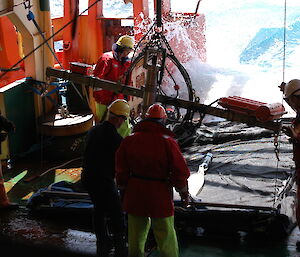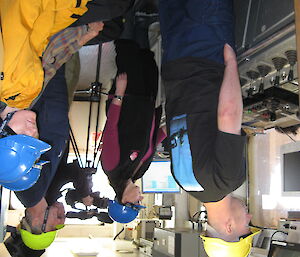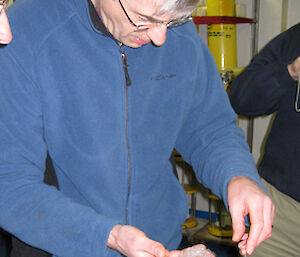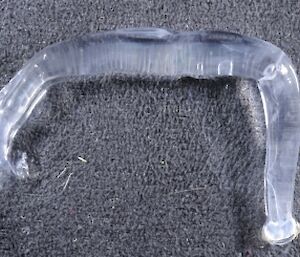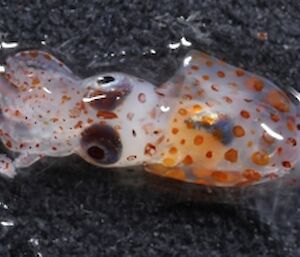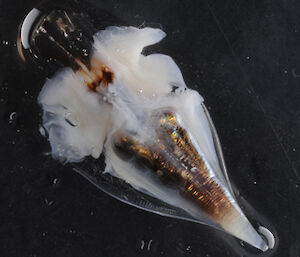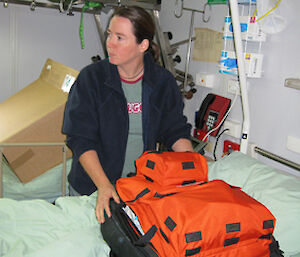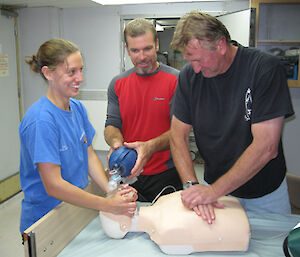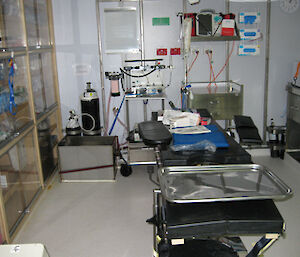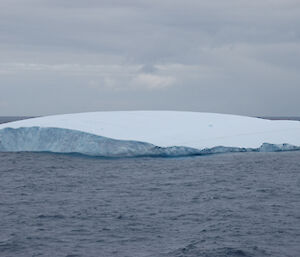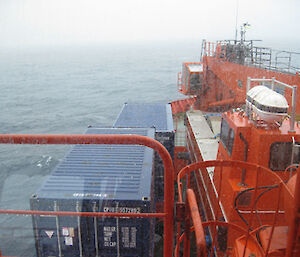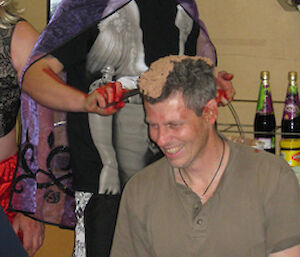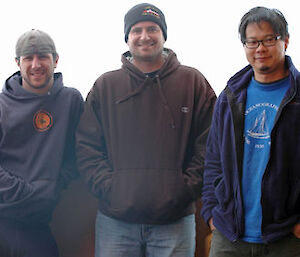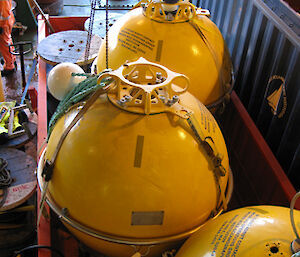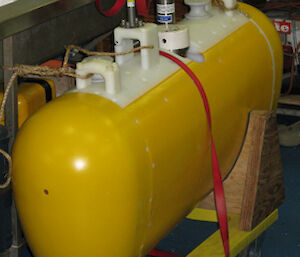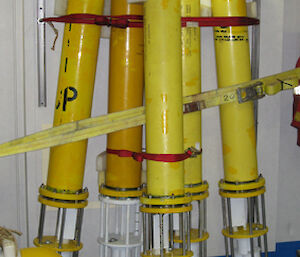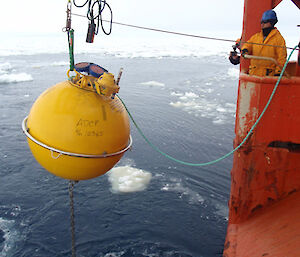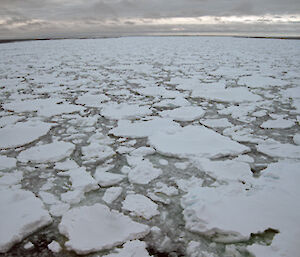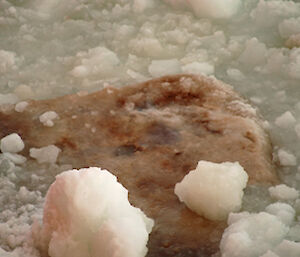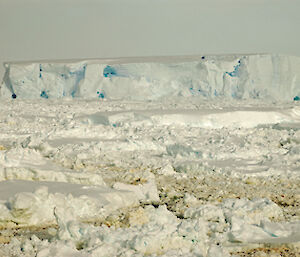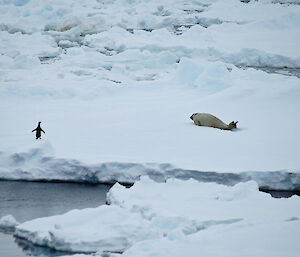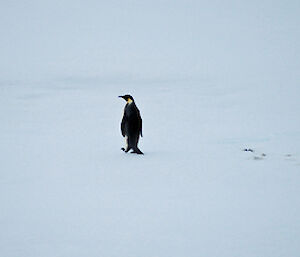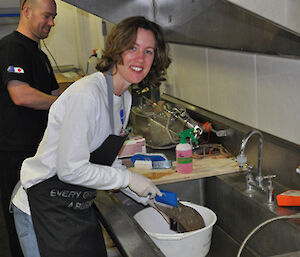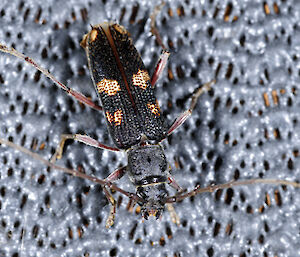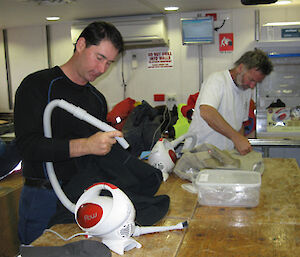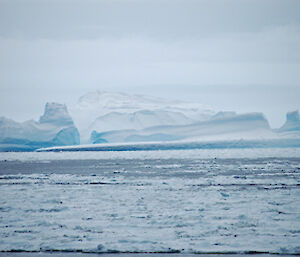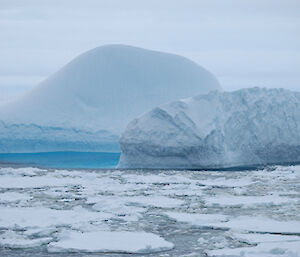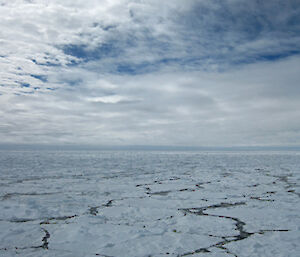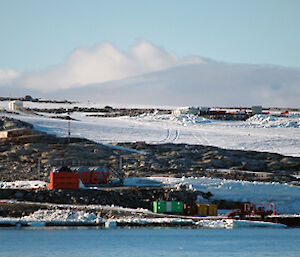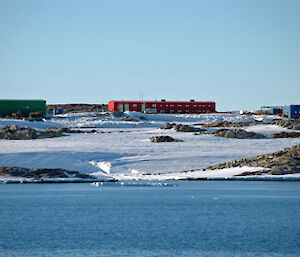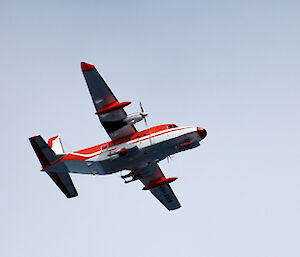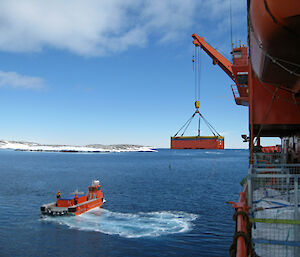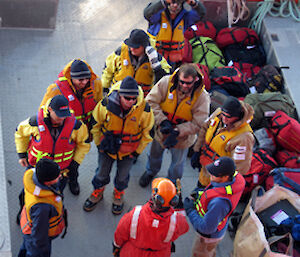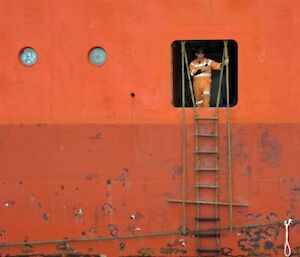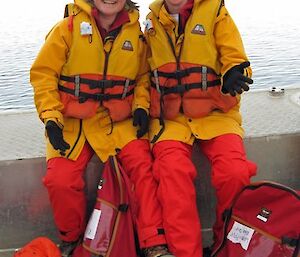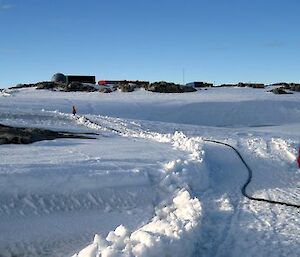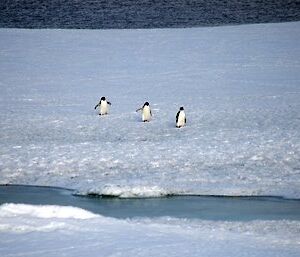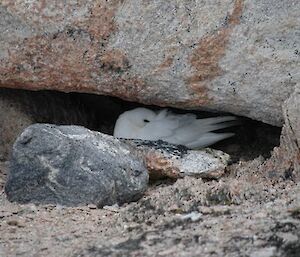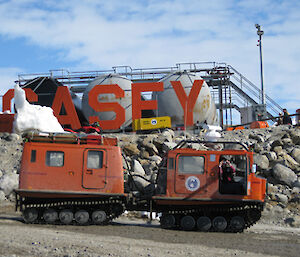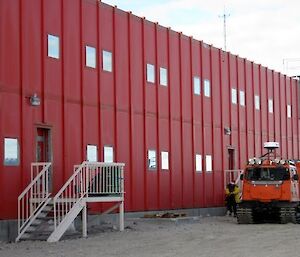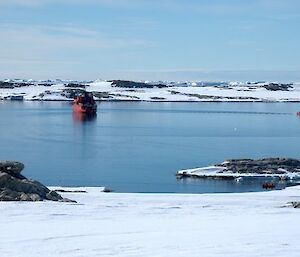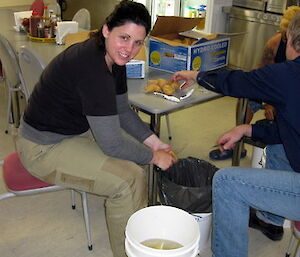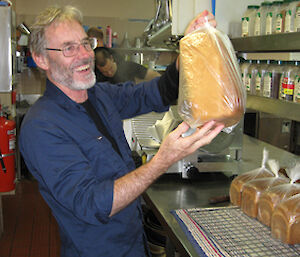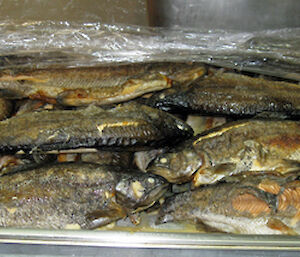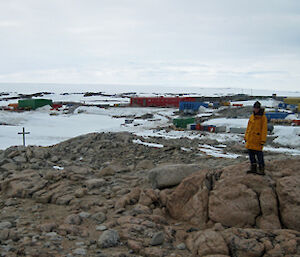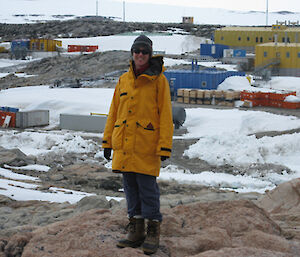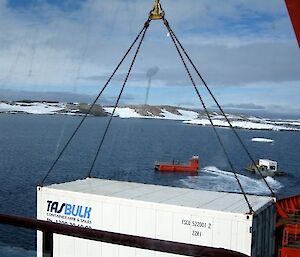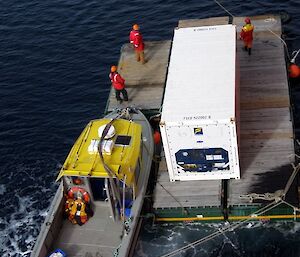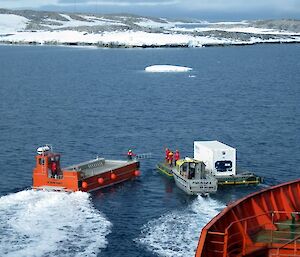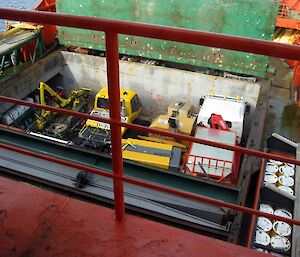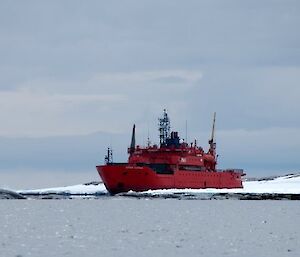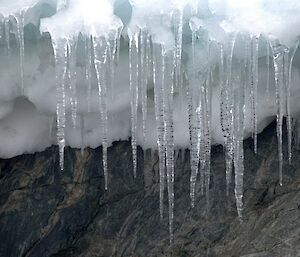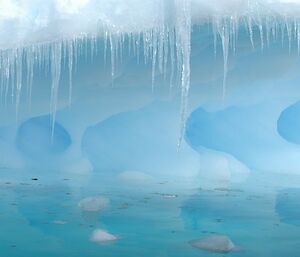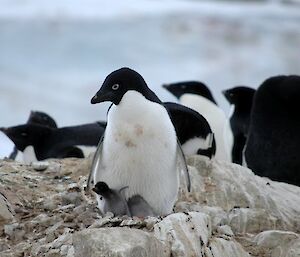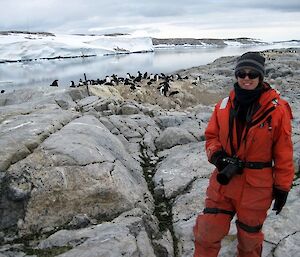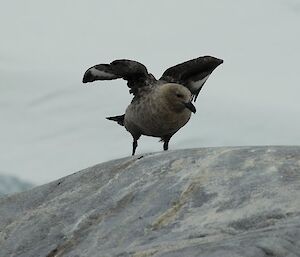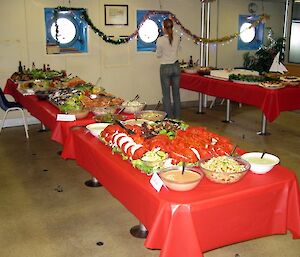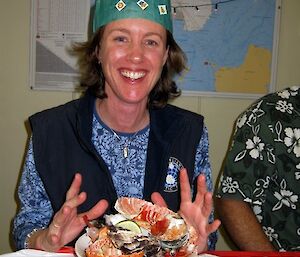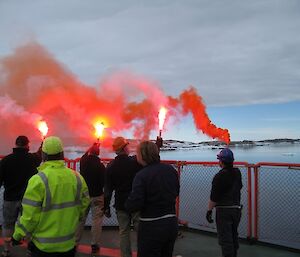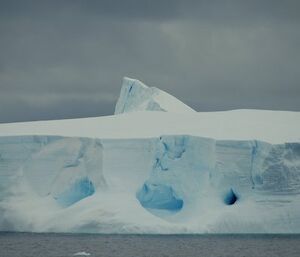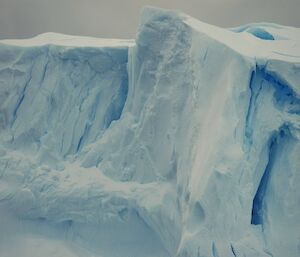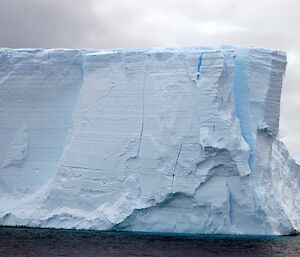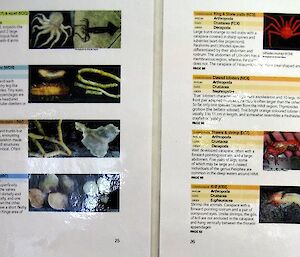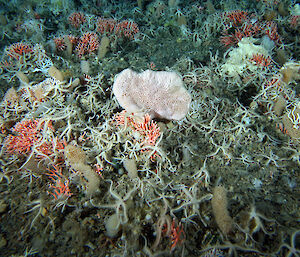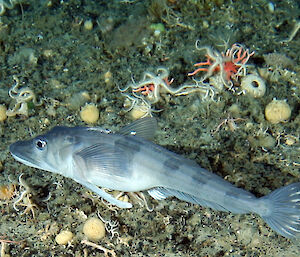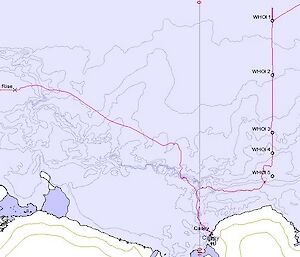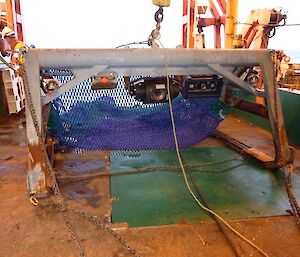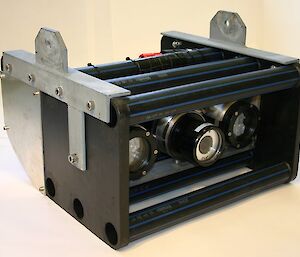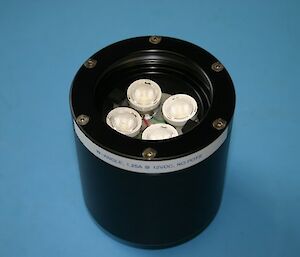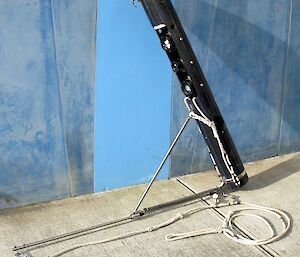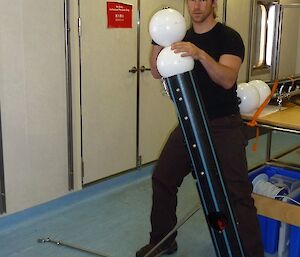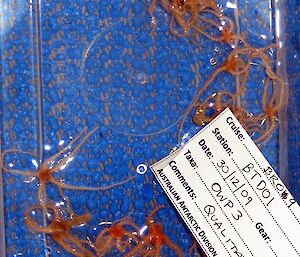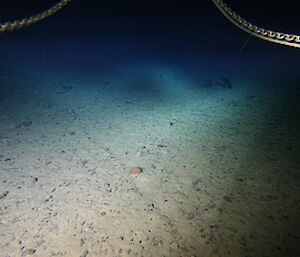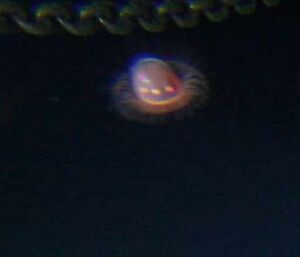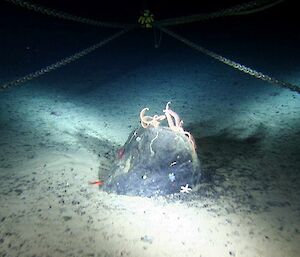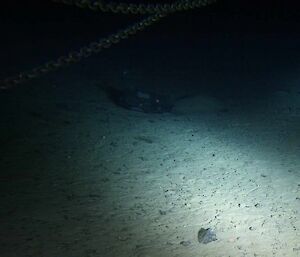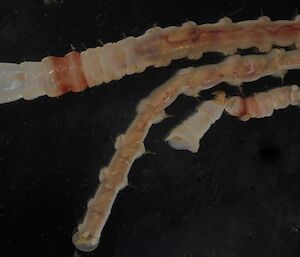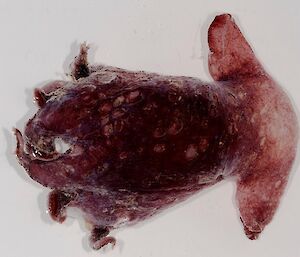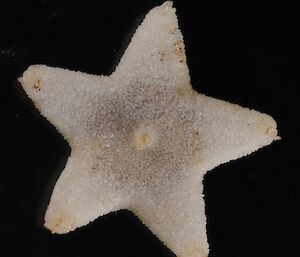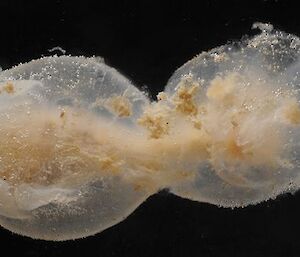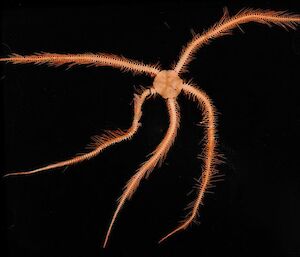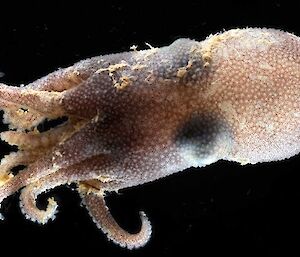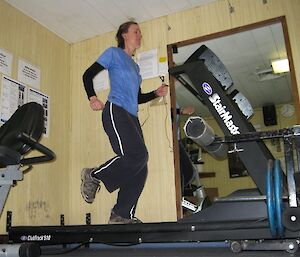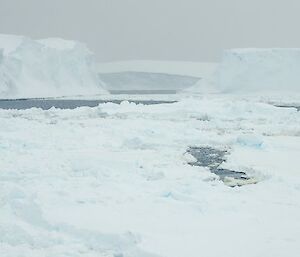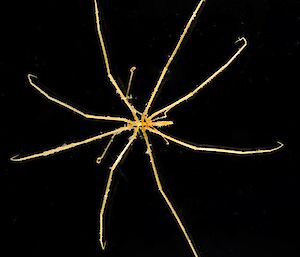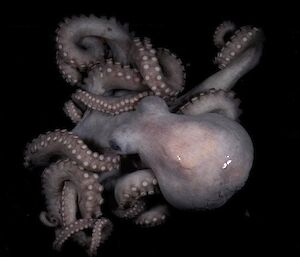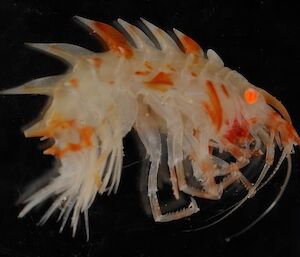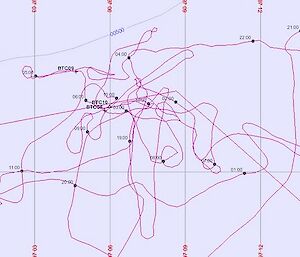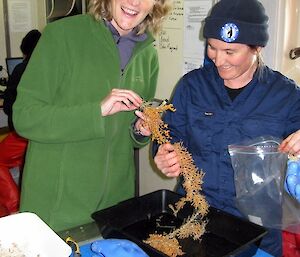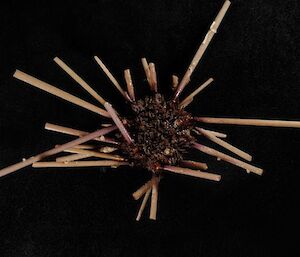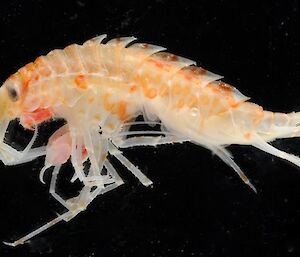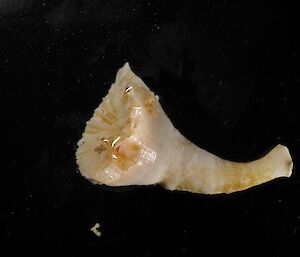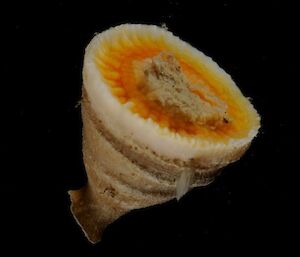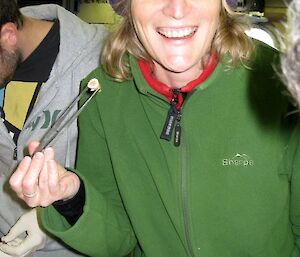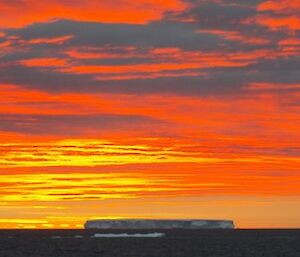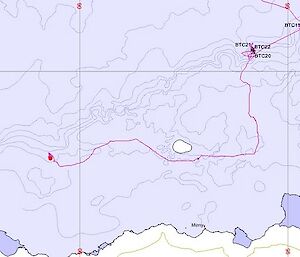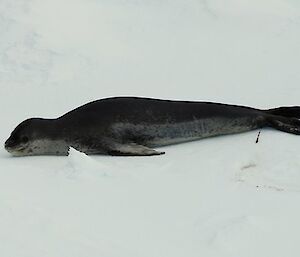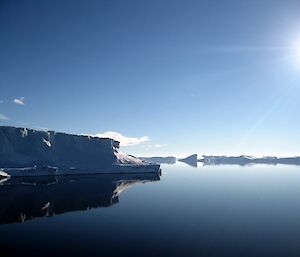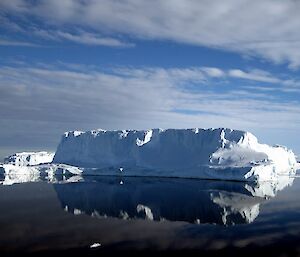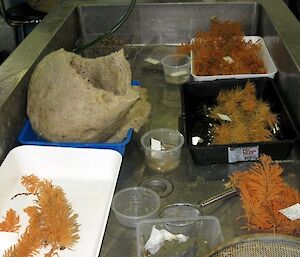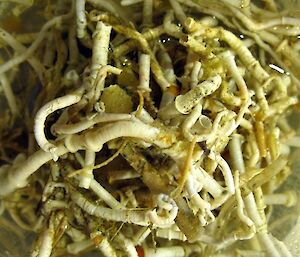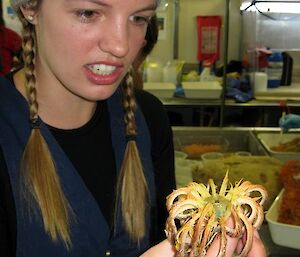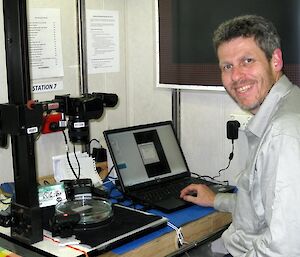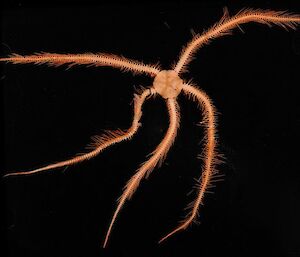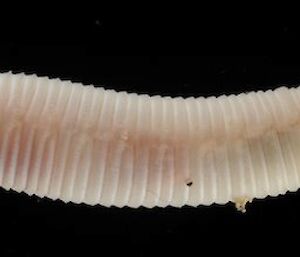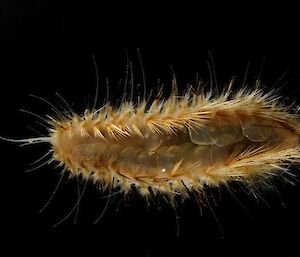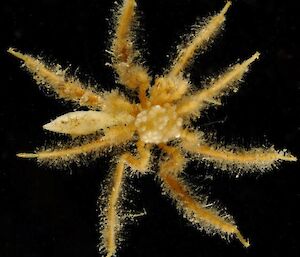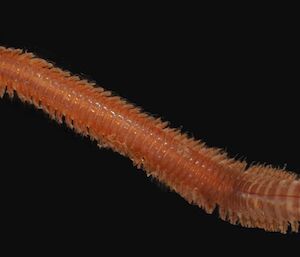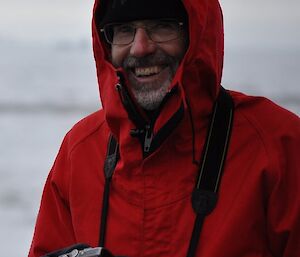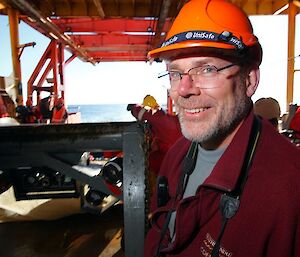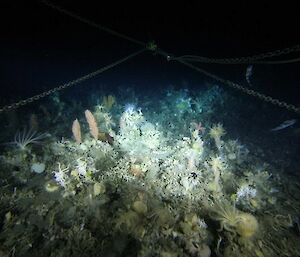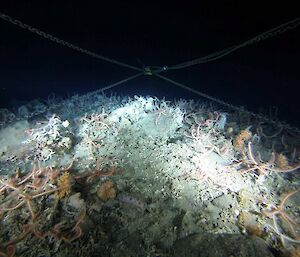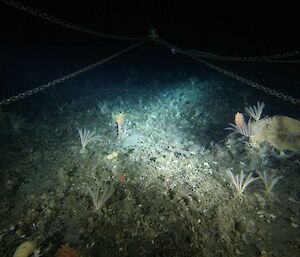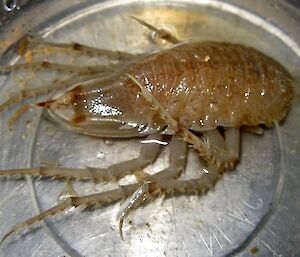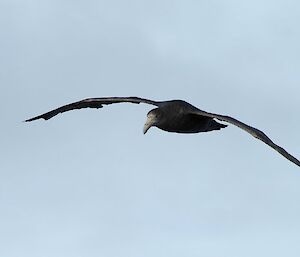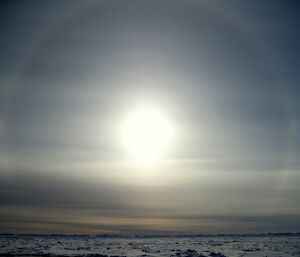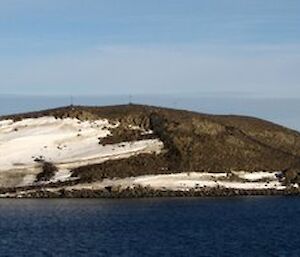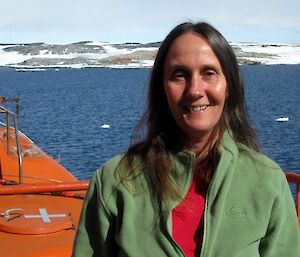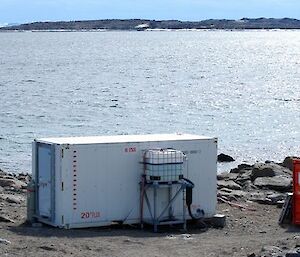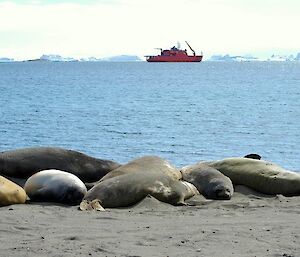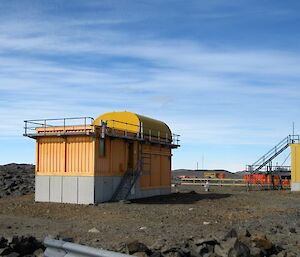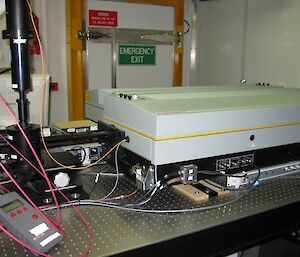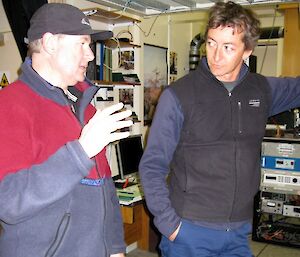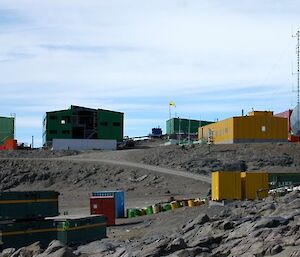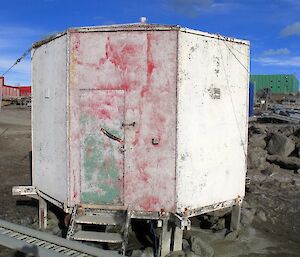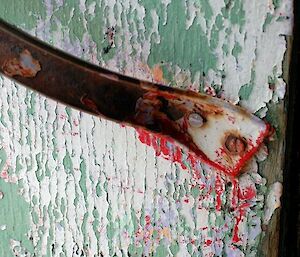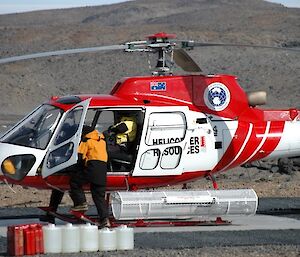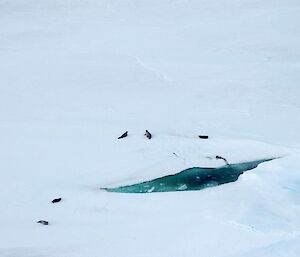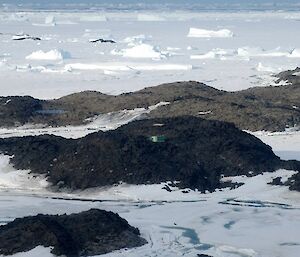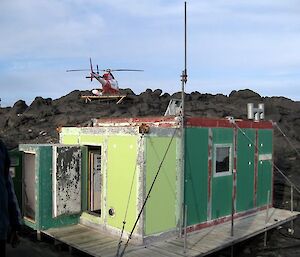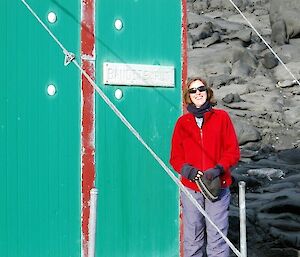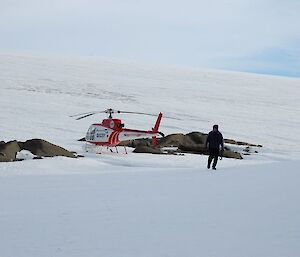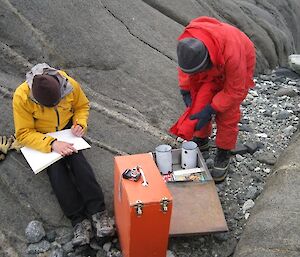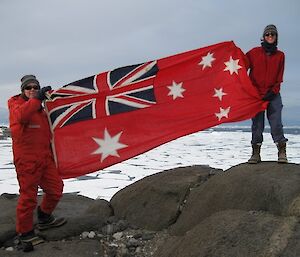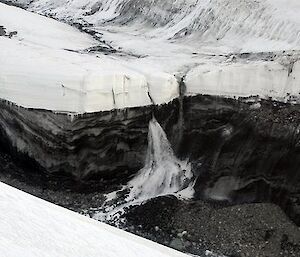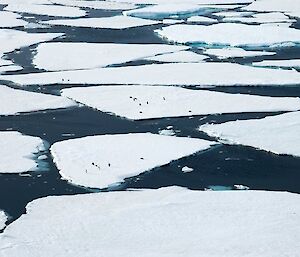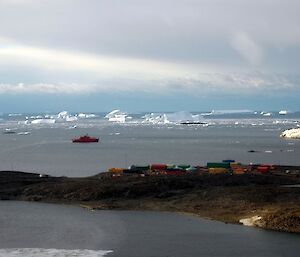Departure
The Australian Antarctic Division’s first marine science voyage of the season started auspiciously with an orange sunset and calm seas providing a welcome backdrop for our departure on the evening of Monday 7 December. After two thunderous bellows from the ship’s horn, which saw those standing too close almost fall over the side, we inched away from Hobart’s Macquarie Wharf 3 and pointed the bow towards the Southern Ocean.
Throughout the day of departure, we were briefed on ship and polar safety and our environmental responsibilities. This continued on board the Aurora Australis with briefings from Captain Scott Laughlin, and Voyage Leader Doug Thost, and included a tour of the ship and lifeboats. Each lifeboat is fully enclosed and can accommodate up to 78 people in their claustrophobic embrace. With everyone belted tightly to their seats, the lifeboat is guaranteed to right itself in rough seas. It was a relief to step back onto the ship’s helideck, which is currently a puzzle of cargo destined for Casey and Davis stations. It’s one of the largest loads in the crew’s memory, and the ship had a definite list to the port side (left) on departure.
Next stop on the tour was the nerve and navigation centre of the ship — the bridge. From here there is a 180 degree view of the Southern Ocean. A strip of red carpet around the console of knobs, buttons and dials, designates the crew’s work zone, while blue carpet marks where sightseers can go.
Navigating around the ship does not come so easily, with a confusing maze of stairs, corridors and doors. But we were given a useful guide to the different levels of the ship: A is for the top deck, B is for bridge, C marks the crew’s living quarters, D is the deck we sleep on, E is for eating at the mess and F is for fun — in the gym.
Back on D deck, my cabin-mate (a marine biologist) and I, set about making our beds and packing away our gear. The cabin sleeps three, but even with two people it is a squeeze to fit everything in. All the cupboard doors and desk drawers have locks on them, and there are straps and bungy cords everywhere to secure things in the inevitable rough seas. Our first night is a calm introduction to the Southern Ocean and we go to sleep to the soothing rumble of the engines.
The next morning my cabin mate and I are struggling to find our sea-legs. I’m well enough to explore the ship a little and try to eat something, but mostly I just have to lie down. I’m forced out of bed at 11 am for the first safety drill (‘muster’) of the trip. We have to don our Antarctic clothing — a one piece freezer suit over thermal wear, beanie, gloves and muck-lucks (sheep-skin lined boots) — with a life jacket over the top. Our names are called and then we all troop back indoors to resume our prior activities.
Rectangular Mid-Water Trawls
The first marine science project began on the second day of the voyage, Tuesday 8 December. A team of scientists from the Antarctic Climate and Ecosystems Cooperative Research Centre (ACE CRC), University of Tasmania and Australian National University (Team Acid) are researching the effects of ocean acidification on tiny marine snails, known as pteropods, and planktonic, single-celled, shell-forming organisms called foraminifera. The role of these organisms in the food web is not know, but they do act as indicators of change in the ecosystem which could have profound implications for commercial fish species, seals and whales.
About 40% of man-made carbon dioxide is absorbed by the ocean and forms a weak acid when it mixes with water. This acid affects the ability of pteropods and foraminifera to form shells, resulting in thinner, lighter, pitted or etched shells. As colder water absorbs more carbon dioxide than warmer water, the effects of ocean acidification will be seen first in the Southern Ocean. According to Dr John Baxter, a government scientific advisor from Scottish Natural Heritage who has joined Team Acid on the ship, ocean acidity has increased by 30% (a pH change of 0.1) since the beginning of the Industrial Revolution and is already affecting shell-forming marine organisms. Observed effects include thinner shells, fewer pteropods in areas where they were previously common, and an increase in gelatinous organisms such as jellyfish and salps.
ACE CRC biologist, Dr Donna Roberts, says the team is undertaking the first study of the effects of ocean acidification on pteropods and foraminifera in their natural environment. “We want to establish a baseline of the health of these organisms in the ocean now, so that they can detect changes in the future,” Dr Roberts said.
To do this the team are deploying a pair of rectangular mesh nets (rectangular midwater trawl — RMT) from 47 to 54 degrees south, along a line from Hobart to Casey. The team is hoping to catch larger pteropods with the 4mm mesh net, but the main species they are looking for is the tiny (0.5-1mm) Limacina helicina antarctica, which will be caught in the 150 micron mesh net. The microscopic foraminifera will also be sieved from the water brought up in the trawl and preserved for later analysis.

